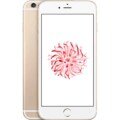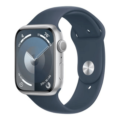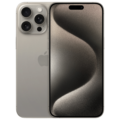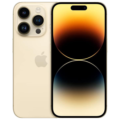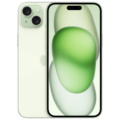- Home
- Apple Devices
- apple-watch
- Apple Watch Series 6 full specifications
Apple Watch Series 6 full specifications

SPECIFICATIONS
General
| Status | Available |
| Announced |
2020, September 15 |
| Released | 18 September, 2025 |
| Model |
A2293, A2294, A2375, A2376 |
| Price Apple iPhone Price in USA, UK, Canada, Australia, India, Pakistan, China, Japan and Europe |
USD 775 EUR 710 |
Network
| Technology |
GSM / HSPA / LTE |
| 2G Network |
GSM 850 / 900 / 1800 / 1900 |
| 3G Network |
HSDPA 850 / 1700(AWS) / 1900 / 2100 - USA, LATAM, Canada HSDPA 850 / 900 / 1700(AWS) / 1900 / 2100 - Global |
| 4G Network |
1, 2, 3, 4, 5, 7, 12, 13, 17, 18, 19, 25, 26, 39, 40, 41, 66 - USA, LATAM, Canada 1, 2, 3, 4, 5, 7, 8, 18, 19, 20, 25, 26, 28, 39, 40, 41, 66 - Global |
| Speed | HSPA, LTE |
| GPRS GPRS (General Packet Radio Service) is a packet oriented mobile data service on the 2G and 3G cellular communication system's global system for mobile communications (GSM), Generally, GPRS is used for the purpose of wireless data transfer, such as sharing pictures and videos or browsing the Internet via a mobile phone connection. | |
| EDGE EDGE (Enhanced Data GSM Environment) is a wireless network technology generally considered the next step in the 2G network offers data transfer rates up to four times faster than ordinary GSM networks, Generally, EDGE is used for the purpose of wireless data transfer, such as sharing pictures and videos or browsing the Internet via a mobile phone connection. |
Body
| Dimensions | 44 x 38 x 10.7 mm (1.73 x 1.50 x 0.42 in) |
| Weight | 47.1 g (1.66 oz) |
| Colors |
Silver, Graphite (DLC), Gold (PVD) |
| SIM SIM (Subscriber Identity Module) is a small card that contains mobile network subscriber's account information. This allows the phone using the card to attach to a mobile network. The SIM card is most commonly associated with GSM and UMTS mobile networks. Moving a SIM card from one phone to another allows a subscriber to switch mobile phones without having to contact their mobile network carrier. SIM cards can also be used by a phone to store limited amounts of data, such as phone numbers and text messages. |
eSIM |
| Build | Glass front (Sapphire crystal), ceramic/sapphire crystal back, stainless steel frame |
| Water Resistant | 50m water resistant |
Display
| Display Type Display Technology => A number of display technologies and types used in mobile phones => TFT (Thin Film Transistor), IPS (In-Place Switching), OLED (Organic Light Emitting Diode), AMOLED (Active-Matrix Organic Light-Emitting Diode), Super AMOLED (an even advanced version of AMOLED), Resistive Touchscreen (Resistive touchscreens contain two layer of conductive material with a very small gap between them which acts as a resistance), Capacitive Touchsceen (Capacitive touchscreen technology consists of a layer of glass coated with a transparent conductor) | Retina LTPO OLED, 1000 nits (peak) |
| Size | 1.78 inches |
| Resolution | 448 x 368 pixels |
| Pixel Density Pixel Density (PPI) is refers to the concentration of pixels on a particular display, measured in pixels per inch (ppi). Pixel density is calculated by dividing the diagonal pixel resolution of a display by its diagonal size, higher pixel density better display quality. | (~326 ppi density) |
| Touch Screen | 3D |
| Display Protection Display Protection => Gorilla Glass is a special alkali-aluminosilicate glass shield with exceptional damage resistance that helps protect mobile displays from scratches, drops, and bumps of everyday use, It is always better to go for a smartphone with Gorilla Glass for that added protection and peace of mind. | Sapphire crystal glass |
| Multitouch | |
| Features | Always-on display |
Camera
| Primary Camera is able to capture photographs and usually videos, The most important characteristics of a camera are the resolution (measured in megapixels), lens focus type (fixed or automatic), higher megapixel cameras are known to capture higher quality photos, but not always a good measurement of the photos quality. | No |
Software
| Operating System OS => Every computer system run on a base software called Operating System (OS). Operating System controls all basic operations of the computer (such as smartphone, PDAs, tablet computers and other handheld devices). The Operating System allows the user to install and run third party applications (apps), apps are used to add new functionality to the device. | watchOS 7.0, upgradable to watchOS 10.4 |
| Browser (Default) | Safari |
Hardware
| Chipset Chipset is a group of integrated circuits designed to perform one or a more dedicated functions, often with real time computing constraints, Popular smartphones are equipped with more advanced embedded chipsets that can do many different tasks depending on their programming. | Apple S6 |
| CPU CPU (Central Processing Unit) mostly known as processors, CPU processes instructions in order to carry out certain functions that make your device operate properly. Processors are often described as the brain of computers, smartphones and tablets, Smartphones and tablets rely on processors to carry out their every task, Processors are an incredibly important factor in selecting any type of computing device, including your smartphone. | Dual-core |
| GPU GPU (Graphics Processing Unit) is a single-chip processor designed to rapidly manipulate and alter memory to accelerate the creation of images in a frame buffer intended for output to a display, This includes things such as lighting effects, object transformations, and 3D motion. | PowerVR |
| RAM (Memory) RAM (Random Access Memory) is a type of computer memory that can be accessed randomly, any byte of memory can be accessed without touching the preceding bytes that allows information to be stored and accessed quickly from random locations. RAM is the most common type of memory found in computer systems, smartphones, tablets and other electronic devices. | 1 GB |
| Internal Storage Internal Storage is a data storage space (flash memory) mostly used in smartphones, tablets and other electronic devices where operating system, apps, music, photos, videos, files and other user data Is stored. | 32GB |
| Card Slot Memory Card Slot is a special slot for inserting a memory card. Memory cards allow you to expand the phone's built-in memory, A memory card (sometimes called a flash memory card or a storage card) is a small storage medium used to store data such as text, pictures, audio, and video, for use on small, portable or remote computing devices such as mobile phones, mp3 players, digital cameras. | No |
| Sensors Sensors are electronic components that detects and responds to some type of input from the physical environment. The specific input could be light, heat, motion, moisture, pressure and location, The output is generally a signal that is converted to use in computing systems, a location sensor, such as a GPS receiver is able to detect current location of your electronic device. | Accelerometer, gyro, heart rate, barometer, always-on altimeter, compass, SpO2, VO2max, Ultra Wideband (UWB) support |
Battery
| Battery Type Battery Type => Cell phones run on various kinds of batteries depending on the manufacturer, phone size or shape and features. There are basically four types of cell phone batteries => Lithium Polymer, Lithium Ion, Nickel Metal Hydride and Nickel Cadmium. | Li-Po |
| Capacity Battery Capacity is a measure (typically in Amp-hr) of the charge stored by the battery, and is determined by the mass of active material contained in the battery. The battery capacity represents the maximum amount of energy that can be extracted from the battery under certain conditions. | 303.8 mAh (1.17 Wh) |
| Placement | Non-removable |
| Wireless Charging Wireless Charging (Inductive Charging) uses an electromagnetic field to transfer energy between two objects. This is usually done with a charging station. Energy is sent through an inductive coupling to an electrical device, which can then use that energy to charge batteries or run the device. | Yes |
Media
| Loudspeaker | Yes |
| 3.5mm Jack |
Connectivity
| Bluetooth Bluetooth is a wireless communications technology for exchanging data between mobile phones, headsets, computers and other network devices over short distances without wires, Bluetooth technology was primarily designed to support simple wireless networking of personal consumer devices. | 5.0, A2DP, LE |
| Infrared Infrared connectivity is an old wireless technology used to connect two electronic devices. It uses a beam of infrared light to transmit information and so requires direct line of sight and operates only at close range. | |
| Wi-fi Wi-Fi is a popular wireless networking technology using radio waves to provide high-speed network connections that allows devices to communicate without cords or cables, Wi-Fi is increasingly becoming the preferred mode of internet connectivity all over the world. | 802.11 a/b/g/n, dual-band |
| Wi-fi Hotspot | |
| USB | No |
| GPS GPS The Global Positioning System is a satellite-based radio navigation system, GPS permits users to determine their position, velocity and the time 24 hours a day, in all weather, anywhere in the world, In order to locate your position, your device or GPS receiver must have a clear view of the sky. | GPS, GLONASS, GALILEO, QZSS |
| NFC NFC (Near field communication) is a set of standards for smartphones and similar devices to establish peer-to-peer radio communications with each other by touching them together or bringing them into proximity, usually no more than a few inches. |
MISC
Description
Released in September 2020, the Apple Watch Series 6 is a game-changing smartwatch that combines powerful features, a sleek design, and health-centric technology. Apple has consistently set the bar for wearable devices, and the Series 6 continues this legacy with impressive upgrades in performance, display quality, and sensors.
Below, we dive deep into the full specifications and good features of the Apple Watch Series 6, providing you with a comprehensive understanding of what makes it one of the top smartwatches on the market.
Table of Contents
Design and Display

The Apple Watch Series 6 maintains the familiar sleek design of previous models but introduces a range of new colors and finishes. Available in 40mm and 44mm sizes, the Series 6 features an LTPO OLED Retina display with a resolution of 324 x 394 pixels for the 40mm model and 368 x 448 pixels for the 44mm model. The display boasts a maximum brightness of 1,000 nits, ensuring excellent visibility in various lighting conditions.
One of the best features of the Series 6 is its always-on display, which allows users to view the watch face and notifications without having to raise their wrist or tap the screen. This feature enhances the user experience by providing continuous access to time and information while preserving battery life through adaptive brightness and refresh rates.
Performance: Powered by the S6 Chip

The Apple Watch Series 6 is powered by the Apple S6 chip, a dual-core processor that offers seamless performance. The S6 chip provides a significant boost in speed compared to its predecessor, enabling quick app launches and smooth multitasking.
Coupled with 1GB of RAM and 32GB of internal storage, the Series 6 offers ample space for storing apps, music, and other media. The device runs on watchOS 7.0, with the ability to upgrade to watchOS 11.3, ensuring you always have access to the latest features and performance enhancements.
Health and Fitness Features: Tracking Your Well-being

The Apple Watch Series 6 introduced several advanced health and fitness features that set it apart from earlier models. One of the key innovations is the blood oxygen (SpO2) sensor, which measures the oxygen saturation level in the blood, providing valuable insights into overall respiratory health.
The Series 6 also includes an electrical heart sensor for ECG readings, a built-in GPS for precise outdoor tracking, and an always-on altimeter that measures elevation changes.
The watch also supports various workout modes, including new options such as dance and rowing, catering to a wide range of fitness activities. Other health-related features include continuous heart rate monitoring, fall detection, and sleep tracking, which help users stay informed about their well-being and fitness progress.
Battery Life and Charging
The Apple Watch Series 6 comes equipped with a 303.8 mAh Li-Ion battery. Apple promises up to 18 hours of battery life on a full charge, which is ideal for most users who can rely on it for a full day of use. The Series 6 also supports wireless charging, making it easy to charge the watch when not in use. While the battery life may vary depending on usage, the device manages to strike a good balance between performance and longevity.
Connectivity: Stay Connected with Ease
The Apple Watch Series 6 offers a range of connectivity options, making it easy to stay connected, whether you’re using the GPS or going phone-free with the cellular model. It supports Wi-Fi 802.11 b/g/n (dual-band) for fast and reliable internet access. Bluetooth 5.0 ensures stable and quick connections to your other Apple devices, such as your iPhone or wireless headphones.
Additionally, the Series 6 includes GPS, GLONASS, GALILEO, and QZSS support for precise location tracking. The inclusion of NFC also allows for Apple Pay, enabling secure, contactless payments directly from your wrist. For cellular versions, the eSIM support lets you make calls, send messages, and use data without needing your phone.
Models and Pricing
The Apple Watch Series 6 is available in two models: the GPS-only model and the GPS + Cellular model. The GPS + Cellular version allows users to make calls, send texts, and use data independently of their iPhone, which is a great feature for those who want to leave their phone behind while exercising or running errands. The Series 6 comes in three color options: Silver, Graphite (DLC), and Gold (PVD), allowing users to choose the one that best suits their style.
The pricing for the Apple Watch Series 6 starts at around 710 EUR, making it a premium smartwatch with features that justify its higher price point.
Conclusion: Is the Apple Watch Series 6 Worth the Investment?
The Apple Watch Series 6 represents a pinnacle in smartwatch technology, combining advanced health monitoring features with impressive performance and a sleek design. With the addition of the blood oxygen sensor, a brighter always-on display, and faster charging, Series 6 offers a comprehensive and refined user experience.
While it has been succeeded by newer models, the Series 6 continues to be a top choice for those seeking a premium smartwatch that excels in both health tracking and everyday functionality.
Whether you’re upgrading from an older model or looking for your first Apple Watch, the Series 6 delivers on all fronts, making it a worthy investment in wearable technology.


